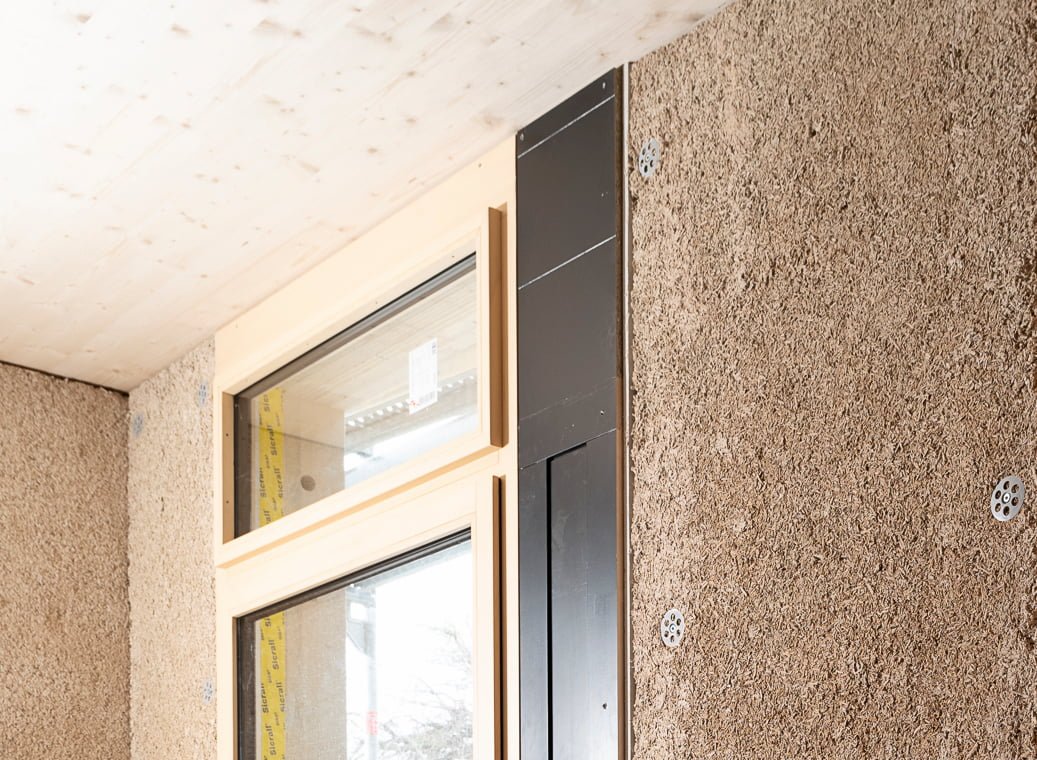Fact sheet
Glass
Key Facts A1-3 per m² (3x)
CO₂ emissions: 57.14 kg/m²
Weight: 30 kg/m²
Fire protection class: B1 according to EN 13501-1; DIN 4102
Heat transfer coefficient U: 0.7 W/m²°K
Key Facts D per m² (3 times)
CO₂ emissions: -0.8882 kg/m²
Weight: 30 kg/m²
Fire protection class: B1 according to EN 13501-1; DIN 4102
Heat transfer coefficient U: 0.7 W/m²°K
-
Special thermal insulation: protects against
Cold and summer warmthGreatest possible energy efficiency
Significant sound insulation
(Sound insulation indication 35-39 dB)Longevity: 40 years is the rule
-
Triple glazing consists of 3 panes of float glass
and 2 gas-filled gaps. In addition, the glass pane is vaporized with a metal layer, which ensures that less heat radiation is transmitted, i.e. the U-value is lowerPhysically justified by the greenhouse or greenhouse effect: glass panes are more permeable to the incoming solar radiation than to the radiant heat emitted by the interior of the room
with the number of glass panes, the heat permeability decreases
evaporated metal layers per disc and the filling gas further intensify this
-
Molten glass consists of the following raw materials: quartz sand, calcium carbonate (lime), dolomite and sodium carbonate (soda)
Soda ash reduces the melting temperature, while lime affects the hardness of the glass. The materials are mixed and mixed with around 15% cullet to save energy – e.g. residual glass from a previous glass production/offcut glass from further processing
Float glass is a flat glass, also known as flat glass, and is the most commonly used construction glass today
Components for window glass coating: ferrochrome mixture, nickel mixture, tin, silver mixture, argon (gaseous), nitrogen (liquid), oxygen liquid, water (desalinated, deionized) and nitrile-butadiene rubber as sealant
Conclusion: 3-fold insulating glazing consists of several components that are elaborately processed in order to guarantee the lowest possible heat transfer coefficient U-value
-
per m² 3-fold insulating glass:
takes into account the production and assembly of the panes and
of the edge seal: sealing materials, spacer
(warm edge), argon filling and surface treatmentCO₂ emissions:
Production A1-3 = 57.14 kg
Transport C2 = 0.1355 kg
Waste treatment C3 = 3,039 kg
Removal C4 = 0.528 kg
Recycling potential D = -0.8882 kg
This dataset describes the production and disposal of 3-pane insulating glazing without a fastening system or frame. The glazing consists of 3 panes (float glass) each with a thickness of 4 mm, double coated (low-e) and a distance of 16 mm between the panes. In the space between the panes there is an argon filling. The U-value of the glazing is 0.7 W/m²*K. The LCI dataset takes into account the production and installation of the glass panes and the edge seal (sealing materials, warm edge, argon filling and surface treatment of the glass). The reference product is scaled to 1m². It is based on triple glazing with dimensions of 124cm * 99cm.
Transport processes for the raw materials were taken into account. All important energy and material flows are included in the system. The impact of the production facilities and infrastructure was not taken into account in the system.
In the disposal phase, manual dismantling (free of loads) is assumed in module C1. The transport in module C2 to the landfill is carried out by truck (50km). In C3, packaging with PE film is taken into account, where relevant (e.g. in the case of mineral fibre products, 0.0125 kg of film per kg of discarded material). Module C4 shows average landfill emissions corresponding to the product (reference area Germany). The use of landfill gas is not taken into account.
-
per m² 3-fold insulating glass, ESG/ESG/ESG, Ug-value 0.6 W/m²K³, thickness 40 mm
CO₂ emissions: 91.2 kg
divided into 85.5 kg CO₂ for production and 5.71 kg CO₂ disposal
-
Glass is recyclable
Coating and gas filling are harmful to the environment,
technologically complex and must be disposed of responsibly after use
-
higher costs
(approx. 15% more expensive than 2-fold glazed)poorer G-value lower solar gains
possible mould formation in the case of poorly
Insulated walls
-
CO₂ -calculation according to ÖKOBAUDAT, acc. to ISO 14067 & EN 15804+A2
Hee et al. (2015): 'The role of window glazing on daylighting and energy saving in buildings, Renewable and Sustainable Energy Reviews; Volume 42, pages 323- 343.
Sadrzadehrafiei et al. (2012) 'Potential energy and emission reduction through application of triple glazing' (EDEB'12), Athens, Greece (pp. 7-9).





